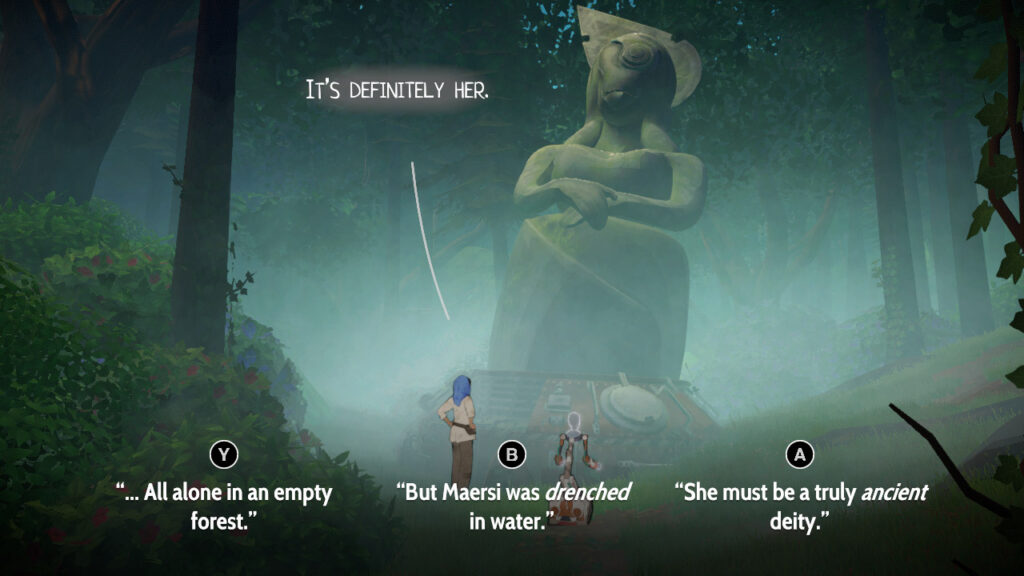Heya friendos! Hope y’all enjoying the vacation period, if that applies to you. This week, I’ll throw in some musings about the games I’ve been playing, good tutorials and bad controls. Let’s dive in.
How Am I Doing?
I’m feeling dandy! I’ve gotten into a productive groove, getting my sun and my exercise. It’s a bit silent in my creative circles because of the vacation period. For my own “vacation”, I have elected to take this opportunity to play through a significant part of my games backlog.
What Am I Doing?
I started out with Heaven’s Vault, a procedural narrative detective game by Inkle. Now, I really like Inkle and a lot of Jon Ingold’s GDC talks have inspired me to start New to Narrative. That being said, I cannot get into Heaven’s Vault at all. I really like the ancient language translation mechanic and the story is interesting enough. But the controls and presentation are so clunky and odd, that playing it feels straight-up bad.

The Three C’s
It really shows to importance of the three C’s. If you’re not familiar with the three C’s, it’s a term coined by Ubisoft employees and stands for Character, Camera and Controls. It stresses the need for these three concepts to be well-polished. You can say about Ubisoft games what you want, but generally, it feels pretty good to move around in them, at the very least.
In Heaven’s Vault, the three C’s are not polished at all. The character moves slow and gets stuck behind invisible colliders often. The camera swings around haphazardly and crosses the dramatic axis so often its hard to keep track where anyone is standing. You often lose control of your character because they unnecessarily start walking on a pre-defined track or a dialogue triggers. Sometimes you’re allowed to execute the dialogue while walking, but sometimes it feels completely static. There’s no way to tell when and why any of that happens.
It’s a shame really. By all accounts, Heaven’s Vault is a game I should love, but I can’t bring myself to even start it up again. It’s not a surprise, though. This game is Inkle’s first attempt at a 3D explorable world, which is a challenge. A challenge that requires good three C’s! So, spend some time on your character, camera and controls if you’ve been neglecting them.
Chants of Sennaar
The other game I’m playing is Chants of Sennaar, a game gifted to me by my lovely brother. Not coincidentally, it’s also a game about translating language, but in the cerebral puzzle genre this time. You interact with people in a world where you don’t speak the language. Each word is represented by a glyph, of which you don’t know the meaning until you start guessing. All you have to go on is the context in which the glyphs present themselves.
After playing for about 10 minutes, I knew this was going to be the game of the year contender for me, even though it came out in 2023. I’ve already logged 6 consecutive hours of playtime on it and only put it down to write this newsletter. I won’t spoil anything major about it, but I’ll share a screenshot from the tutorial.

Good Tutorial
What you’re looking at is the very first puzzle you’ll run into. It’s a lever, in front of a door. There’s nowhere else to go but through. The door is locked, and you’ll assume this lever will open it. As soon as you click on it, it will zoom in on this plaque. Three glyphs are added to your notebook: the one that the cursor points at, the one to the right of it, and the one below it.
In your notebook, you can type your own guess for each glyph. What’s so cool about this, is that the context is very limited and the solution is immediately apparent, but there’s a margin for error. The context implies that the first and third glyph mean open and close respectively. It’s a good assumption that the second glyph means door, because it is repeated.
But, initially, I guessed up and down for the glyphs. Activate and deactivate could have been good guesses too. The next puzzle dispels any ambiguity, because it uses the same glyps, but this time the puzzle involves pipes and valves. It is confirmed that the glyphs mean open and close. The absence of the other glyph in this context means that it’s very likely door.
Voila, you’ve now successfully tutorialized your core mechanic. What’s cool about this, is that the player retains agency and control, as well as already engaging their deductive skills. You can be wrong, but at least you have the ability to be wrong. Making mistakes in this scenario teaches you the game. So many other games have a tutorial that just tells you what to do, and allow no freedom to experiment. Ok, rant over!
Why Am I Doing? (this)
Looking at games you’re playing critically is part of being a game designer. Sometimes, it can kind of get in the way of enjoying the experience for what it is. I think a lot of people from different career paths have a similar problem. I can imagine a master chef not enjoying a fancy dinner because of bad plating. Or a firefighter being too cautious around a barbeque.
So I feel it’s doubly important to share my enthusiasm for when a game does something right! I hope some people reading this will consider playing Chants of Sennaar. It’s such a precious game.
